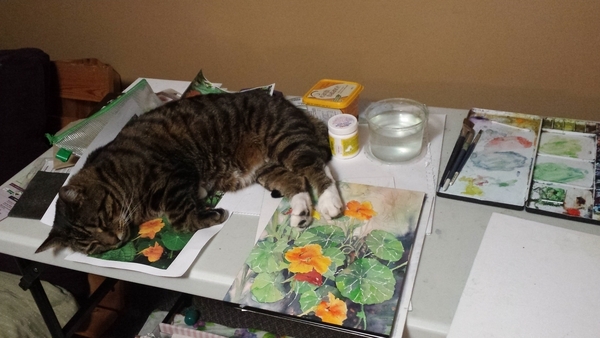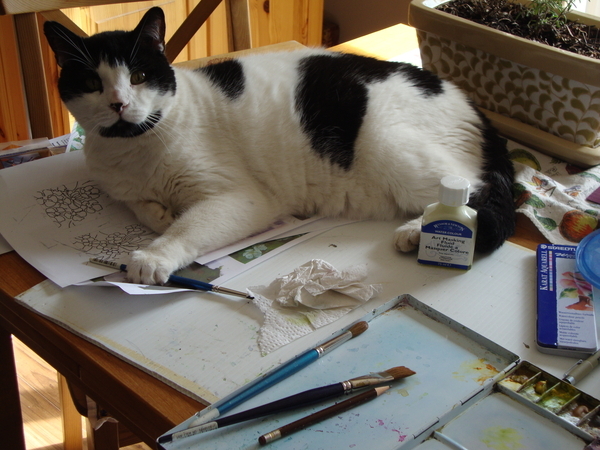| Home | | | About | | | Paintings | | | Events | | | Blog | | | Mailing List | | | Links | | | Contact & Price Info |
Blog
Lots of folks know about at least some of the hazards of art materials - white lead in paint, for example. Yet many artists don't think about the many hazards of their occupation, particularly since they may have chronic exposure to small amounts of material over long periods of time. By working daily with the materials, they can get an exposure that can be harmful, even if a short term or acute exposure would not be particularly terrible.
There's a very good set of informative links on the US Government's Department of Health and Human Service's website that every artist should bookmark, entitled (link current as of the time of writing)
Keeping the Artist Safe: Hazards of Arts and Crafts Materials
While some risks are fairly obvious (that turpentine you rinsed a brush in probably has skulls and crossbones right on the front label!), others are often more subtle and artists really need to think through their studio practices. Are you inhaling pastel dust or dipping your paintbrush absentmindedly into your coffee cup? The pigment in the material might be something like cadmium, or cobalt, and you could be putting your health at risk. The links above will help you outfit your studio with whatever it is that you need - masks, gloves, fire extinguishers, etc.
Artists also get set in their ways. Learned to paint oils with linseed oil and turps? How about getting down to an art supply store and replacing those with many of the non-toxic or reduced-toxicity modern solvents that are on the market. Manufacturers have modern substitutes for many of the toxic pigments too - take some time to learn about some of the newer pigment lines that are being used to replace some of the toxic chemicals. As a bonus, many of these also have improved lightfastness. Every major manufacturer has information on their websites about health and safety of their products. For example, here is Winsor & Newton's Health and Safety Information page.
So, we've thought about our safety. What else? People usually think about their children's safety too. No, your artists' paints are not OK for your kids to play with, and not just because of the mess. Get them some paint that is specifically made for children's art. The page I headlined above also has good links on children's art supplies, at home and at school.
Then, let's not forget about pets! Dogs as we know will eat and/or roll in just about anything. Think your cat is fastidious? My cats will try to drink water out of my watercolour container. And just wait until you try to clean up pthalo blue off their paws (and all the furniture they walked on before you noticed).

So if you have a pet, make sure you are supervising them in your studio space, and secure your materials before you leave the area. Ideally you don't really want mixed media pieces containing fur anyway ..... right?
Finally, let's think about the environment. If those chemicals are toxic to you and your kids and your pets over time, then guess what? They are toxic to the rest of life on earth too. Look into how to dispose of your materials safely. Some ideas to get you started on thinking greener about your art practice are nicely summarized in the Blick article
12 Ways Artists Can "Go Greener"
One of the best tips in my view is the one I've already mentioned - when choosing your materials, go with a choice that is less toxic to begin with, so that at the end of the day you will have fewer issues with ongoing safety and eventual disposal. I'm going to take my own advice and see if I can't find a reduced-toxicity alternative the next time I need to buy paint.
